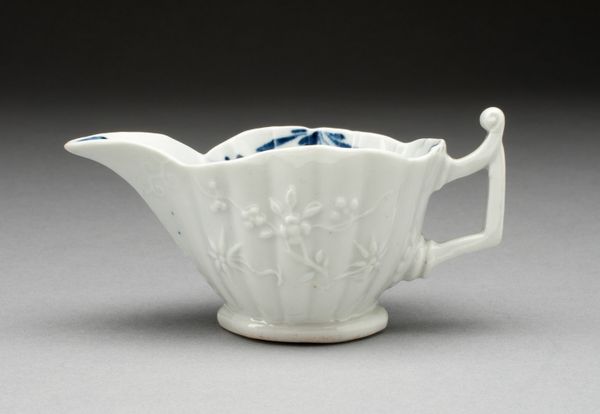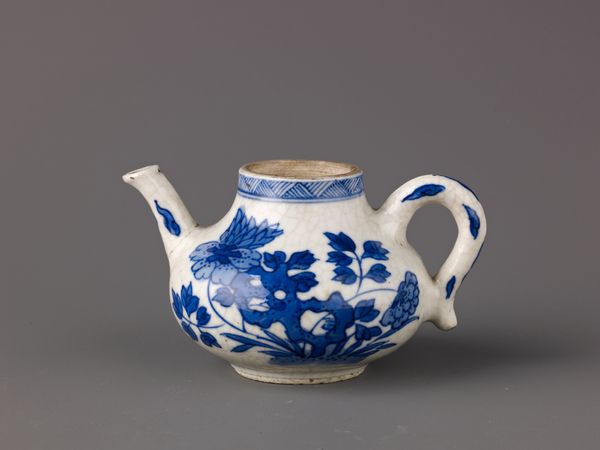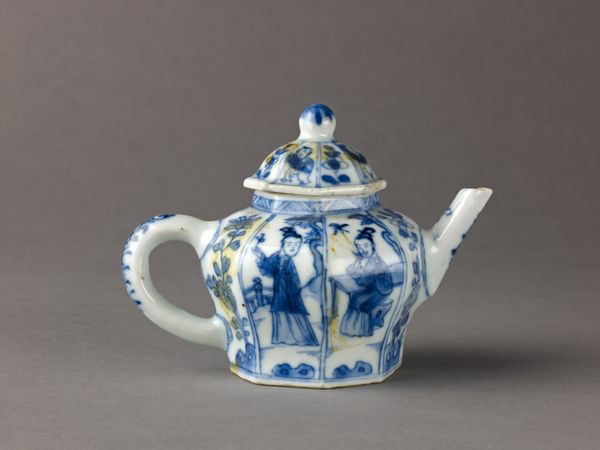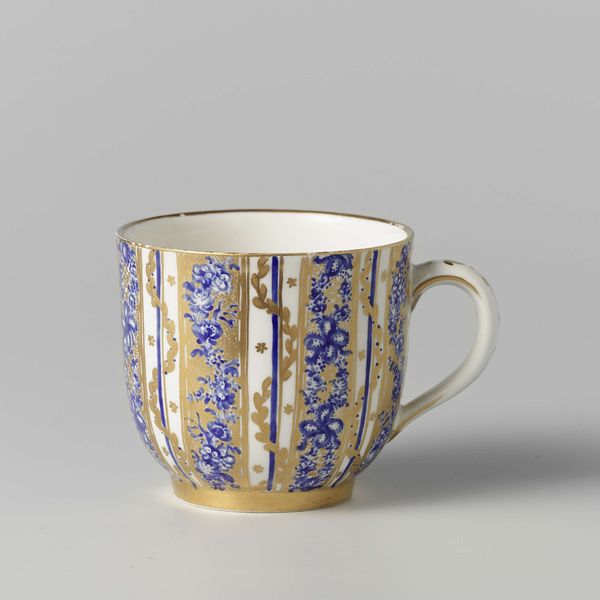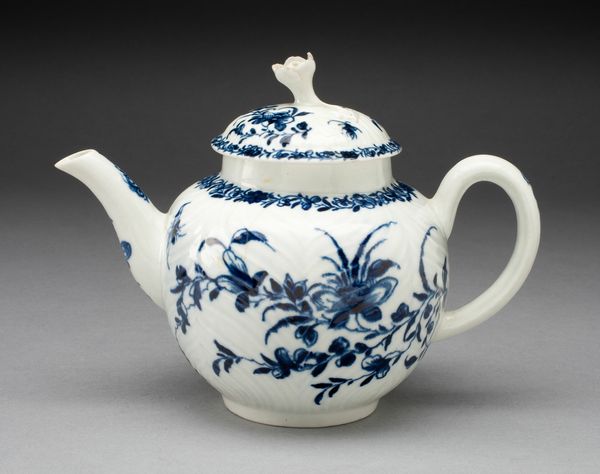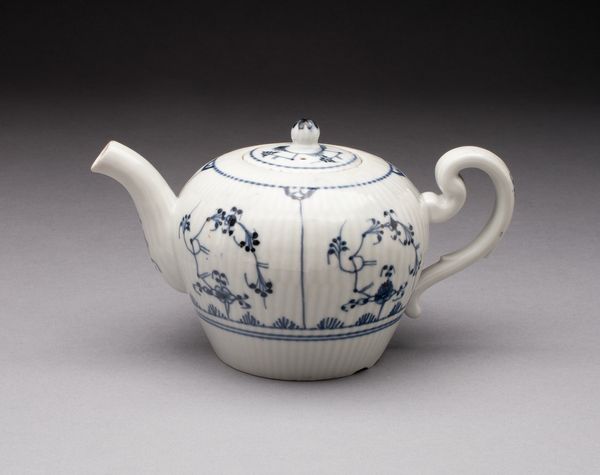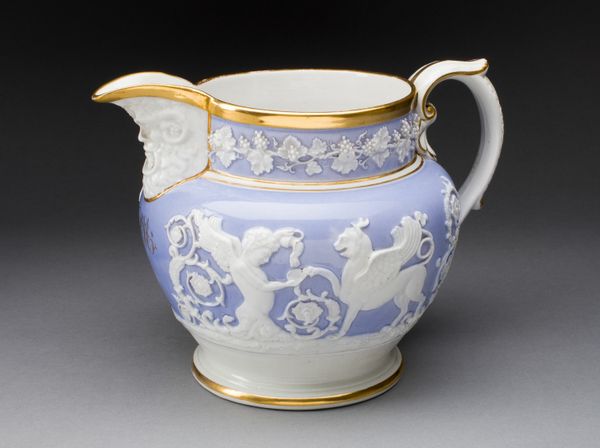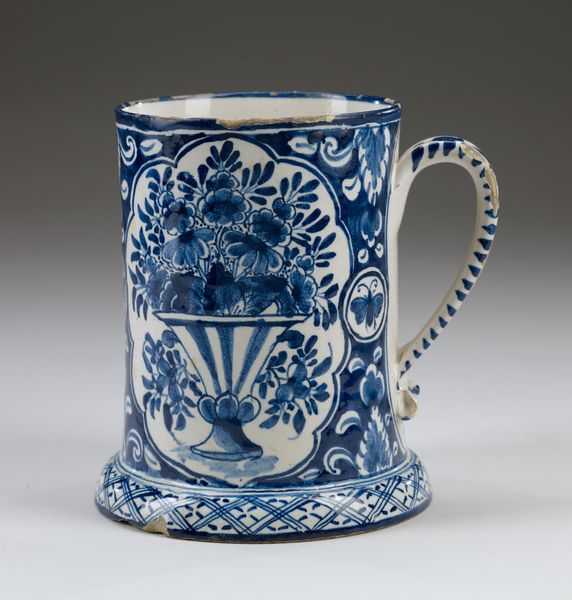
ceramic, porcelain
#
ceramic
#
porcelain
#
decorative-art
Dimensions: H. 2.7 cm (1 1/16 in.); diam. 7.1 cm (2 13/16 in.)
Copyright: Public Domain
Curator: This petite porcelain "Cup" was crafted around 1878 by the Worcester Royal Porcelain Company. Its decoration contrasts bold blue with intricate gilding. Editor: It looks… delicately poised, somehow. I notice immediately how small and precious it appears; almost as if it embodies some sort of Victorian-era yearning. The colors seem deliberate too; what can you tell me about the color choices? Curator: Certainly. This object, created during the British Aesthetic Movement, can be contextualized as an example of how non-western forms permeated upper and middle class culture and living arrangements. It speaks to a kind of class and geographic privilege through commodity. In a globalized colonial context, tea was imported to the center while craftspeople from the colonized countries often remained invisible and unnamed. Editor: I see. Beyond the broad societal factors at play here, the ornamentation carries potent cultural memory. Blue has long signified status, spirituality, and even mourning across myriad cultures. That combination of indigo, overlaid with these delicate florals evokes both purity and preciousness. And what do we make of that gilded geometric pattern adjacent to the cup's handle? Curator: Right. Consider the geometric motifs – a Western appropriation of Eastern designs that catered to the fashionable, Eurocentric taste of the era. Porcelain itself, remember, carried connotations of extreme wealth in eighteenth- and nineteenth-century Europe. This single teacup materializes entire networks of production, access, and economic exchange across vast imperial distances. It's the intersection of industrial capability and established social hierarchies, essentially. Editor: True. So, it is more than just an everyday luxury item. You begin to perceive, just behind that polished gleam, histories of unequal labor. This “cup” echoes much louder stories. Curator: It forces a kind of reckoning. And, to your earlier point about delicacy, it embodies precarity too: what appears solid reflects very unstable economic systems and political climates of that moment in time. Editor: Fascinating. I'm starting to see this teacup now, not just as some precious object but as a time capsule pregnant with both memory and hidden discord.
Comments
No comments
Be the first to comment and join the conversation on the ultimate creative platform.


